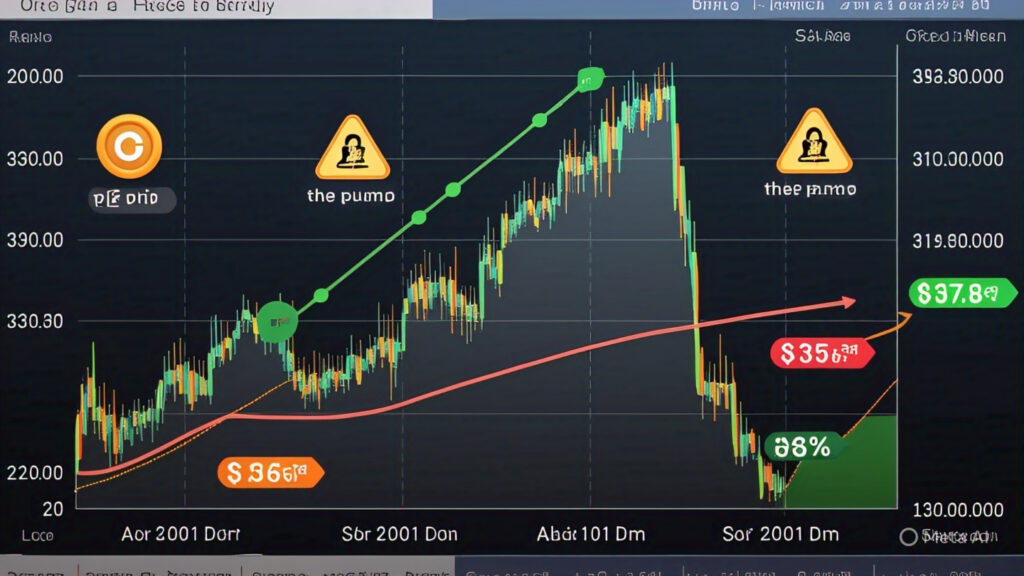Introduction: Navigating the Perils of the Digital Frontier
The world of cryptocurrency, while brimming with innovation and potential, unfortunately also attracts its fair share of bad actors. Just like any burgeoning financial landscape, the cryptoverse is not immune to scams and fraudulent schemes designed to prey on both newcomers and experienced enthusiasts alike. The allure of quick profits and the decentralized nature of crypto can create fertile ground for those looking to exploit others.
Protecting yourself from these scams is paramount to a safe and successful journey in the digital currency realm. Understanding the common tactics used by fraudsters, recognizing the red flags, and adopting proactive security measures are your best defenses against becoming a victim.
This article will serve as your essential guide to the most prevalent crypto scams you need to be aware of. We’ll break down each type of scam in a clear, humanized way, explaining how they work, highlighting the warning signs, and providing actionable tips on how to avoid them. By arming yourself with this knowledge, you can navigate the cryptoverse with greater awareness and safeguard your hard-earned digital assets.

The Landscape of Crypto Scams: A Rogues’ Gallery
Crypto scams come in various shapes and sizes, often evolving as the market matures. However, several core tactics remain consistently popular among fraudsters. Here’s a look at some of the most common crypto scams you need to be vigilant against:
1. Phishing Scams: Casting a Wide Net for Your Credentials
Phishing involves deceptive attempts to acquire your sensitive information, such as login credentials (email, exchange accounts), private keys, or seed phrases, by disguising as a trustworthy entity. These attacks often come in the form of:
- Fake Websites: Scammers create convincing replicas of legitimate cryptocurrency exchanges, wallets, or projects. They might use slightly different domain names or website designs to trick you into entering your login details or private keys.
- Fake Emails: You might receive emails that appear to be from a legitimate crypto platform, warning you about a security breach or requiring you to verify your account by clicking on a malicious link that leads to a fake website.
- Fake Social Media Accounts: Scammers create fake profiles on platforms like Twitter, Telegram, or Discord, impersonating official project accounts or support staff. They might offer fake giveaways or ask for your private information under false pretenses.
Red Flags:
- Suspicious Email Addresses or Domain Names: Check the sender’s email address and the website URL carefully for any misspellings or unusual characters.
- Urgent or Threatening Language: Scammers often use urgent language to pressure you into acting quickly without thinking.
- Requests for Sensitive Information: Legitimate crypto platforms will never ask for your private keys or seed phrase.
- Unsolicited Offers or Promotions: Be wary of unexpected emails or messages promising free cryptocurrency or unrealistic returns.
How to Avoid:
- Always Verify Website URLs: Double-check the website address before entering any sensitive information. Bookmark legitimate sites.
- Be Skeptical of Emails: Don’t click on links in emails from unknown or suspicious senders. Go directly to the official website.
- Verify Social Media Accounts: Look for the official verification badges on social media profiles.
- Never Share Your Private Keys or Seed Phrase: This is the golden rule of crypto security.

2. Pump and Dump Schemes: Riding the Artificial Wave
Pump and dump schemes involve a group of individuals or a single entity artificially inflating the price of a low-liquidity cryptocurrency (the “pump”) through coordinated buying and spreading misleading positive information. Once the price has surged, they sell off their holdings at a profit (the “dump”), leaving unsuspecting investors who bought in late with significant losses as the price crashes.
Red Flags:
- Sudden and Unexplained Price Surges: Be wary of cryptocurrencies experiencing rapid and dramatic price increases with no fundamental reason.
- Aggressive Promotion on Social Media: Watch out for coordinated campaigns on social media platforms urging people to buy a specific coin with promises of massive gains.
- Limited Information or Transparency: Pump and dump schemes often involve lesser-known coins with little publicly available information or a whitepaper lacking substance.
- “Guaranteed” Returns or Inside Information: Scammers often lure victims with false promises of guaranteed profits or supposed insider tips.
How to Avoid:
- Be Skeptical of Hype: Don’t let FOMO (Fear Of Missing Out) drive your investment decisions.
- Research the Fundamentals: Always conduct thorough due diligence on any cryptocurrency before investing.
- Be Cautious of Small, Unknown Coins: Exercise extra caution with cryptocurrencies that have very low market capitalization and trading volume.
- Understand Market Dynamics: Recognize that rapid, unsustainable price increases are often followed by sharp corrections.

3. Ponzi and Pyramid Schemes: The Illusion of Sustainable Returns
Ponzi and pyramid schemes are fraudulent investment scams that promise high returns to early investors using money from later investors, rather than from legitimate business activities. In the crypto context, these schemes often involve:
- High-Yield Investment Programs (HYIPs): These programs promise unrealistically high daily or weekly returns on your cryptocurrency investments.
- Referral-Based Systems: Schemes that heavily incentivize recruiting new members, with early investors profiting from those who join later. The underlying product or service (if any) is often insignificant.
Red Flags:
- Unrealistic Returns: Be extremely suspicious of any platform promising returns that seem too good to be true – because they usually are.
- Guaranteed Profits: Legitimate investments always carry risk. Promises of guaranteed profits are a major red flag.
- Pressure to Recruit: Schemes that heavily emphasize recruitment over genuine product or service usage are likely pyramid schemes.
- Lack of Transparency: Vague explanations of how the returns are generated should raise suspicion.
How to Avoid:
- Be Skeptical of High Returns: If it sounds too good to be true, it probably is.
- Understand the Business Model: Investigate how the platform generates its returns. Is it through legitimate trading or other sustainable activities?
- Be Wary of Referral-Heavy Systems: Focus on the underlying value proposition rather than just recruitment incentives.
- Do Your Research: Thoroughly vet any investment platform before entrusting them with your funds.

4. Rug Pulls: The Sudden Disappearance Act
Rug pulls are a type of exit scam that is particularly prevalent in the decentralized finance (DeFi) space, especially with new and unaudited projects. They involve the project team suddenly abandoning the project and making off with investors’ funds after creating hype and attracting significant investment. This can happen by:
- Removing Liquidity: The team removes the majority of the cryptocurrency and its paired asset (e.g., ETH) from a decentralized exchange (DEX), causing the price to plummet to zero.
- Selling Off Large Holdings: The team secretly holds a large portion of the project’s tokens and sells them all at once, crashing the price.
Red Flags:
- Anonymous or Doxxed (but Untrustworthy) Teams: Lack of transparency about the team’s identities or a team with a questionable history.
- Unaudited Smart Contracts: Investing in DeFi projects with unaudited smart contracts is extremely risky as they may contain vulnerabilities.
- High Percentage of Token Ownership by the Team: A large concentration of tokens held by the team raises the risk of a sudden sell-off.
- Unusual Smart Contract Permissions: Smart contracts with permissions that allow the developers to unilaterally control or withdraw funds are a major red flag.
How to Avoid:
- Invest in Audited Projects: Prioritize DeFi projects whose smart contracts have been audited by reputable security firms.
- Research the Team: Look for transparent and experienced teams with publicly verifiable identities.
- Analyze Token Distribution: Check the distribution of tokens to identify potential risks of a rug pull.
- Understand Smart Contract Permissions: Be aware of the permissions granted to the project developers in the smart contract.

5. Impersonation Scams: Playing a Familiar Role
Scammers often impersonate well-known figures, celebrities, or official representatives of cryptocurrency projects or exchanges on social media platforms. They might:
- Offer Fake Endorsements or Giveaways: Impersonators might claim that a celebrity is endorsing a particular cryptocurrency or offering a giveaway, tricking people into sending them funds with the promise of multiplied returns.
- Pretend to be Customer Support: Fake support agents might reach out to you on social media or through direct messages, offering “help” but ultimately trying to steal your login credentials or private keys.
Red Flags:
- Unsolicited Messages: Be suspicious of direct messages from accounts claiming to be official support or offering unsolicited promotions.
- Grammatical Errors and Typos: Fake accounts often have poor grammar and spelling.
- Requests for Sensitive Information: Legitimate support will never ask for your private keys or seed phrase.
- Unverified Accounts: Always check for the official verification badge on social media profiles.
How to Avoid:
- Be Skeptical of Celebrity Endorsements: Verify any celebrity endorsements through official channels.
- Only Contact Support Through Official Channels: Use the official support channels provided on the exchange or project’s website.
- Never Share Sensitive Information: Do not share your passwords, private keys, or seed phrases with anyone online.
- Report Suspicious Accounts: Help protect the community by reporting fake accounts to the social media platform.

6. Romance Scams: Playing on Emotions
Romance scams involve fraudsters building online relationships with victims, often over a period of time, and then eventually asking for cryptocurrency investments or funds for fabricated emergencies.
Red Flags:
- Professed Love Quickly: Scammers often declare strong feelings early in the relationship.
- Avoidance of Meeting in Person: They will often come up with excuses for why they can’t meet in real life.
- Requests for Cryptocurrency: Eventually, they will ask for cryptocurrency investments or financial assistance for urgent, often dramatic situations.
How to Avoid:
- Be Cautious of Online Relationships: Be wary of people you meet online who express strong emotions quickly.
- Never Send Cryptocurrency to Someone You Haven’t Met in Person: This is a major red flag.
- Be Suspicious of Urgent Requests for Money: Verify any sob stories or emergencies through independent means.

7. Mining Scams: The Allure of Easy Passive Income
Scammers often promote fake cloud mining services or sell overpriced and inefficient mining hardware, promising easy passive income.
Red Flags:
- Unrealistic Profitability Claims: Promises of guaranteed high returns from mining without significant upfront investment or technical knowledge are often scams.
- Pressure to Invest Quickly: Scammers might pressure you to invest before the “opportunity” disappears.
- Lack of Transparency: Vague details about the mining operations or hardware specifications.
How to Avoid:
- Research Mining Profitability: Understand the costs and complexities of cryptocurrency mining.
- Be Skeptical of Cloud Mining Services: Thoroughly vet any cloud mining platform before investing.
- Be Cautious of Overpriced Hardware: Compare prices and specifications from reputable vendors.

Protecting Yourself: Essential Security Practices
Beyond recognizing specific scams, adopting strong security practices is crucial for staying safe in the cryptoverse:
- Use Strong and Unique Passwords: For all your crypto-related accounts (exchanges, wallets, email).
- Enable Two-Factor Authentication (2FA): On all platforms that offer it, preferably using an authenticator app.
- Be Careful with Links and Attachments: Avoid clicking on suspicious links or downloading attachments from unknown senders.
- Use Reputable Exchanges and Wallets: Research and choose well-established and secure platforms.
- Store Significant Amounts Offline: Consider using hardware wallets for long-term storage of larger crypto holdings.
- Educate Yourself Continuously: Stay informed about the latest scams and security best practices.
- Trust Your Gut: If something feels off or too good to be true, it probably is.

Conclusion: Vigilance is Your Greatest Asset
The world of cryptocurrency offers incredible opportunities, but it also demands vigilance. By understanding the common types of scams, recognizing the red flags, and implementing robust security practices, you can significantly reduce your risk of becoming a victim.
Remember that scammers are constantly evolving their tactics, so staying informed and maintaining a healthy dose of skepticism are your greatest assets. Don’t let the fear of missing out cloud your judgment. Take your time, do your research, and prioritize the security of your digital assets. By staying alert and informed, you can navigate the exciting world of crypto safely and confidently.



